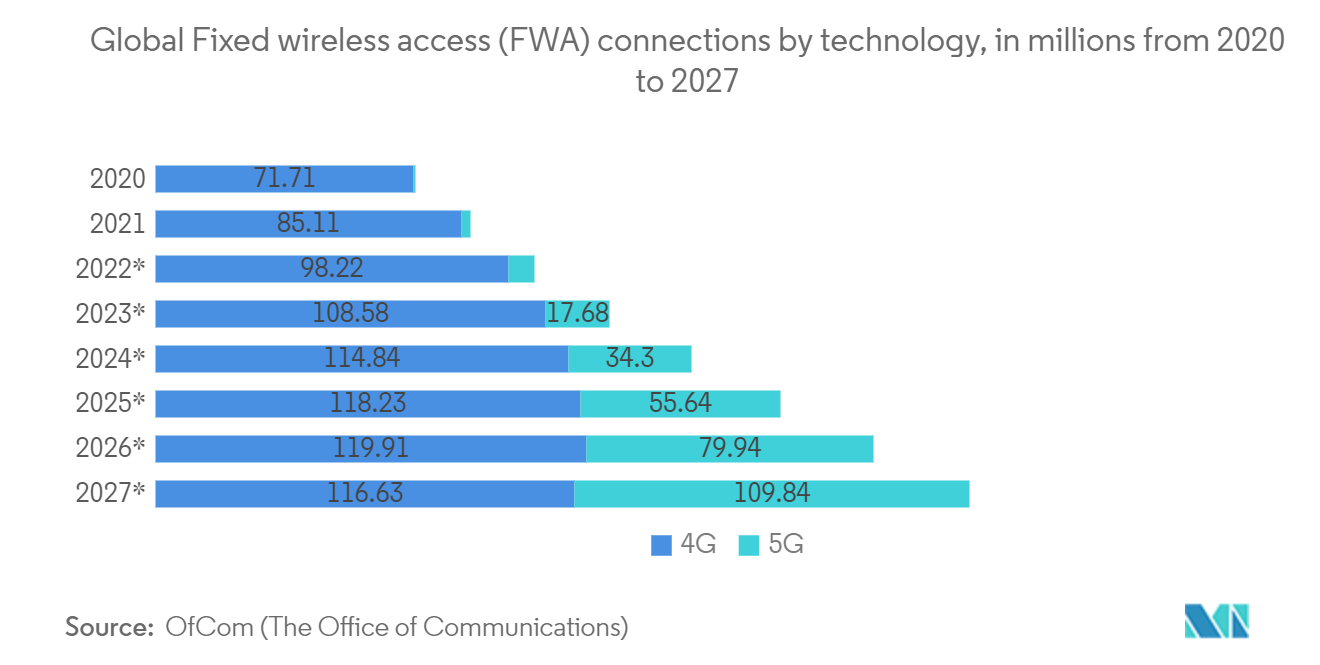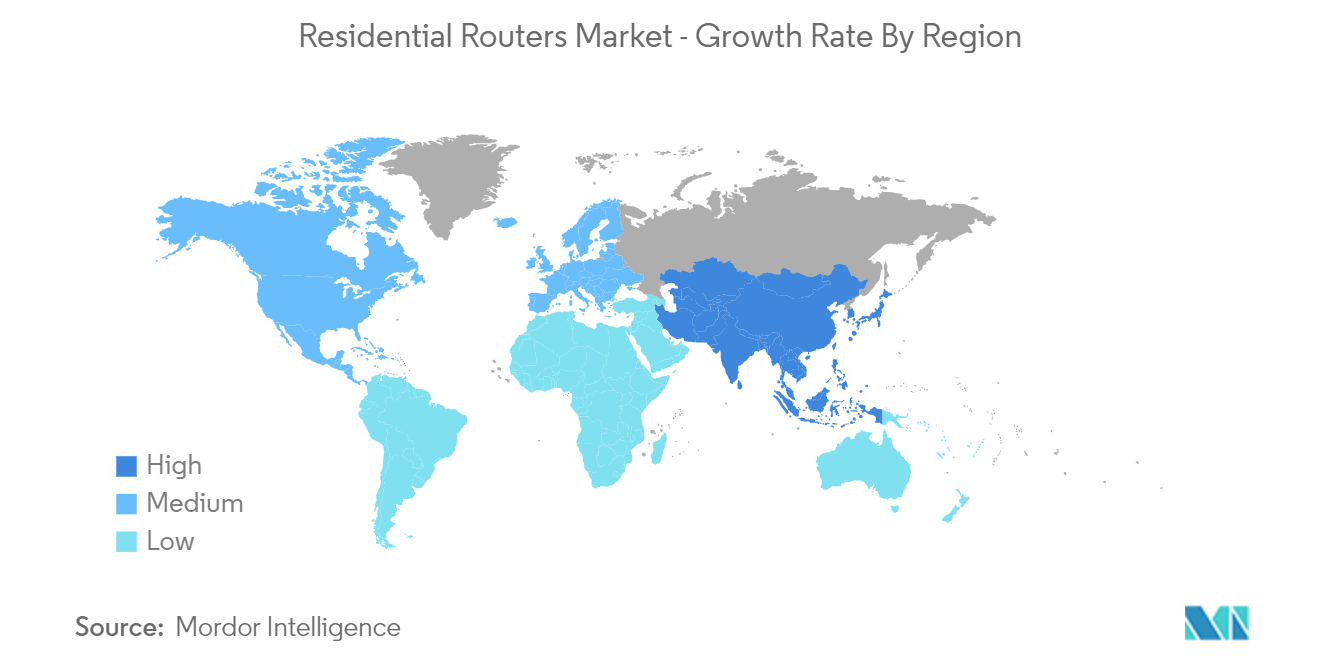Market Trends of Residential Routers Industry
Wireless Connectivity to Witness the Market Growth
- The Internet has become more affordable and accessible over the years, particularly in urban areas, and has even made its way to semi-urban and rural areas with the widespread adoption of wireless technology. This has not only brought convenience to people's lives but has also significantly improved productivity, as wireless connections do not require cables and are faster than wired connections. As a result, Wi-Fi routers have become a norm in most houses.
- In March 2023, Qualcomm, in partnership with WeSchool, Telecom Italia (TIM), and Acer, launched the 5G Smart Schools program to provide next-generation wireless technology solutions to schools in Italy. The program aims to develop digital skills among secondary school students and provide professional development opportunities for teachers.
- Moreover, Cox Private Networks is running Fixed Wireless (FWA) trials to deliver high-speed internet in rural areas. This initiative will help bridge the digital divide and provide access to the internet to people living in remote areas.
- In March 2022, the US Government raised 14.2 billion USD for the Affordable Connectivity Program (ACP) to help rural communities pay for their internet service. With mid-band frequencies, Citizens Band Radio Service (CBRS) will offer broadband in rural communities. Broadband, a regional internet provider, debuted CBRS-based Fixed Wireless Access services focused on rural areas, further improving access to the internet in remote locations.
- Overall, the increasing accessibility and affordability of the Internet, along with the development of new wireless technologies, are bringing numerous benefits to people's lives and improving opportunities for education, communication, and economic growth.

North America Is Expected to Hold Significant Market Share
- Based on the latest report from GSMA, 5G is currently booming in North America and is projected to dominate the wireless services sector by 2025. The United States is expected to have the world's second-highest 5G adoption rate, with only South Korea surpassing it. By 2025, 5G is forecasted to account for almost all mobile capex as operators increase mid-band spectrum deployments. As a result, 5G revenues are expected to increase from 294 billion USD in 2021 to 333 billion USD in 2025, showing the immense growth potential for this technology.
- Moreover, 5G is expected to cover 92% of the Canadian population and 100% of the US population. Major telcos in the US are leveraging 5G Fixed Wireless Access (FWA) technology to gain market share from cable providers in the fixed broadband sector. Among them, T-Mobile, with 0.98 million FWA subscribers as of Q1 2022, is the largest single provider of 5G FWA services.
- In October 2022, Transaction Network Services (TNS) launched its Smart Sim capability for Global Wireless Access, which benefits processors, ISOs, and merchants across the US. TNS's extensive local and international wireless coverage allows North American customers to take advantage of the same dependable and secure wireless connectivity, with round-the-clock assistance, wherever they need to deploy, providing access to roaming and domestic connectivity choices in various geographies.
- In summary, 5G is experiencing rapid growth in North America and is expected to continue to dominate the wireless services sector by 2025. The US is poised to have one of the highest 5G adoption rates globally, with T-Mobile leading the charge in 5G FWA services. With TNS's Smart Sim capability, North American customers can benefit from reliable and secure wireless connectivity for their business needs, backed by comprehensive coverage and support.


